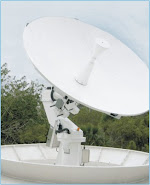Meteorological Satellites - help meteorologists to predict the weather or see what is happening at the moment. The satellites generally have cameras that can take pictures of the earth's climate, both from a point geostacionário fixed as polar orbits.
Satellite Communications - allows data and telephone conversations can be retransmitted via a satellite. Satellites to cover the Telstar communications and Intelsat.
Satellite broadcasting of television - send signals from one point to another (similar to the satellites of communication).
Satellites Scientific - perform a variety of scientific missions. The Hubble space telescope is one of the most famous scientific satellites, but there are several others to observe a bit of everything from patches to solar gamma rays.
Satellite Navigation - to help ships and aircraft to navigate. The most famous are the GPS satellites NAVSTAR.
Rescue Satellite - to respond to radio signals at the request of relief.
Terrestrial Observation Satellites - of analyzing the planet, looking for changes, from deforestation to the temperature and coverage of the ice pack. The most famous are the series LANDSAT.
Military Satellites - many their real applications remain a secret. The possibilities for the collection of information using electronic, high-tech equipment and a sophisticated recognition of photographic are unlimited.
sexta-feira, 9 de novembro de 2007
Different satellite orbits
- The artificial satellites occupy different orbits that have different characteristics. Normally, these routes are defined in relation to Earth.
- Most of telecommunication satellites are geostationary satellites, or occupy an orbit geostacionária.
- Depending on the altitude at which the satellites are, and depending on the characteristics that describe the orbit, it is possible to define various types of orbits: - GEO (Geosynchronous Earth Orbit): circular orbit equatorial geossíncrona.´
- Lperíodo of revolution: 23h56 m4, 091 s
- Laltitude average: 35786 km
- LEO (Low Earth Orbit): órblaltitude typical: 500-1500 km Lperíodo of revolution 1h 30m-2h
- MEO (Medium Earth Orbit): circular orbit of average altitude Laltitude typical: 10400 km Lperíodo of revolution 6 hours
- HEO (Highly Elliptical Orbit): elliptic orbit Lórbita elliptic inclined Lperigeu low altitude
Subscrever:
Mensagens (Atom)




